
by wang, Simon | Jul 10, 2025 | Monascus Red Color
I still remember the first time I saw a naturally colored rose drink bottled for retail in Delhi—the color was stunning. But two weeks later? It had turned brown. That’s when I knew color stability wasn’t just a technical detail—it was everything.
Monascus Red offers a vibrant, natural alternative to synthetic dyes in Indian beverages, with good stability in moderate heat and pH. Its fermented origin and performance in sugar-rich, mildly acidic drinks make it a top choice for clean-label beverage brands across India.
In a market where visual appeal drives shelf presence and consumer trust, getting the color right—and keeping it that way—is non-negotiable.
Why Does Color Stability Matter So Much in Indian Beverages?
You’ve probably judged a juice by its color before tasting it. We all have.
Color stability influences customer perception, product freshness, and shelf appeal. In Indian beverages, where sugar, acid, and ambient storage conditions are common, choosing the right colorant is key to product success.

From nimbu pani to rose sherbet, India’s beverage world is bursting with vibrance. But here’s the truth most people miss: that beautiful blush or deep red tone won’t stay that way without the right pigment.
I’ve worked with brands that nailed the flavor and packaging—only to lose customer trust because the color faded within days. That’s where Monascus Red steps in, bridging beauty and reliability.
| Color Factor | Impact on Consumer |
|---|
| Vibrancy | Signals freshness |
| Consistency | Reflects quality |
| Fading/Discoloration | Suggests spoilage |
| Labeling (“Natural Color”) | Boosts trust |
Your red beverage has about two seconds to make an impression. Make it count—and make it last.
What Is Monascus Red and Why Is It Suitable for Indian Drinks?
Not all natural reds are created equal—especially when they meet the heat, sugar, and acid of Indian drinks.
Monascus Red is a fermented pigment derived from Monascus purpureus fungi, offering a warm red hue that holds up in mildly acidic, sweet beverages typical to India’s market.
Monascus Red isn’t trying to be flashy. It’s earthy. Warm. Deep. It doesn’t scream neon like synthetic reds, but it has this quiet strength—especially in rose syrups, Ayurvedic tonics, and fruit concentrates.
In fact, here’s how it compares:
| Natural Red Colorant | Heat Stability | pH Range Suitability | Flavor Impact | Best Use Cases |
|---|
| Monascus Red | Moderate-High | 3.5–7 | Neutral | Syrups, tonics, rose milk |
| Beet Red | Low | 4.5–6 | Earthy | Cold juices only |
| Anthocyanins | Low | <4.0 | Slight tart | Acidic drinks (e.g., cranberry) |
| Paprika | Moderate | 5–7 | Slightly spicy | Savory beverages |
I once saw a Monascus-colored jamun drink survive a full month on shelf without losing its red-purple hue. That’s not just impressive—it’s market-winning.
How Does Monascus Red Perform Under Real Beverage Conditions?
To answer this, I’ve tested it myself—with brands in Delhi, Surat, and even in Chennai’s coastal heat.
Monascus Red performs well in sugar-heavy, mildly acidic beverage environments and remains stable under pasteurization and ambient storage—making it ideal for Indian ready-to-drink products.

Here’s a quick field-test summary from our customer trials:
| Condition | Result |
|---|
| pH 3.8 (Rose Syrup) | Color stable for 60 days |
| 85°C Pasteurization | Slight darkening, no fading |
| Ambient storage (30°C) | Maintained vibrancy at 45 days |
| 5% sugar + citric acid | No precipitation, consistent hue |
Where it doesn’t work well: extreme acidity (<pH 3) or very high UV exposure. But honestly, most Indian drinks fall within that sweet spot where Monascus thrives.
One of my favorite success stories was a West Bengal-based brand that launched a "Herbal Rose Infusion" for wellness cafes. They replaced carmoisine with Monascus, and not only did the drink sell better—it photographed better on Instagram, too.
What Beverage Types in India Can Benefit Most from Monascus Red?
I get this question from clients all the time: “Can we use Monascus in X drink?” And 80% of the time, the answer is yes.
Ideal applications for Monascus Red include rose syrup, fruit-flavored milk, sherbets, functional herbal drinks, and Ayurvedic tonics—especially those positioned as clean-label or free from artificial additives.
Let’s break it down by product category:
| Beverage Category | Why Monascus Works Well |
|---|
| Rose Syrup | Matches rose flavor & tradition |
| Flavored Milk | Stable in dairy pH, looks premium |
| Herbal/Immunity Drinks | Aligns with Ayurvedic roots, no synthetic look |
| Fruit Concentrates | Color survives light heat & sugar |
| Wellness Tonics | Clean-label positioning, citrinin-free |
A Gujarat client once said: “The new color feels… honest.” That stuck with me. Because that’s exactly the vibe Indian beverage consumers want: not flashy, just clean, safe, beautiful.
How to Ensure Color Stability During Processing and Storage?
Choosing Monascus Red is step one. Using it correctly is step two.
To maximize color stability, manufacturers must control pH (ideally 3.5–6.5), avoid prolonged UV exposure, and ensure consistent pasteurization. Proper storage and antioxidant synergy also improve Monascus Red’s performance in beverages.
Tips from Our Lab:
- Dissolve thoroughly in water or syrup base before final blending
- Avoid metal ions (use EDTA or glass-lined tanks if needed)
- Use with antioxidants like Vitamin C or rosemary extract to reduce oxidative fading
- Check compatibility with other botanicals or acids—some like lemon or vinegar may darken the tone
We also recommend always requesting a solubility trial sample. Because nothing beats testing in your exact formulation. At Santa Color, we provide a 10g–100g sample for this reason. It’s better to tweak early than troubleshoot later.
What Makes Monascus Red a Better Fit Than Synthetic Colors?
Indian consumers are watching—reading labels, googling ingredients, and asking questions in supermarkets and on Amazon reviews.
Unlike synthetic colors like Carmoisine or Tartrazine, Monascus Red supports natural branding, clean-label claims, and aligns with FSSAI and global food safety trends—without compromising appearance.
| Comparison Factor | Monascus Red | Synthetic Red (Carmoisine) |
|---|
| Source | Fermented rice | Petroleum-based |
| Label Claim | Natural, fermented color | Artificial color (E122) |
| Market Trend Alignment | Strong (clean label) | Declining |
| Global Perception | Positive | Banned in some countries |
| Child-Friendly Claims | Yes (citrinin-free) | Often restricted |
I always tell my clients this: It’s not just about replacing red—it’s about upgrading your brand language.
A wellness brand from Bengaluru used to hide its red colorant in tiny letters. After switching to Monascus, they flipped the script—“Naturally Colored with Fermented Monascus Extract”—and turned it into a selling point.
Where Can Indian Manufacturers Source Food-Grade, Stable Monascus Red?
Of course, sourcing matters. You don’t want to end up with Monascus that fades, clumps, or contains citrinin.
The best sources of beverage-grade Monascus Red offer citrinin-free guarantees, strong color value, and verified heat and pH stability. Always ask for batch COAs, solubility tests, and storage guidelines before purchase.
| What to Look For | Why It Matters |
|---|
| Citrinin-Free Certification | Ensures food safety, FSSAI compliance |
| Color Strength (E1%1cm) | Indicates dose efficiency |
| Particle Size / Solubility | Smooth blending in drinks |
| Support for Label Claims | Helps marketing clean-label products |
| Local Document Support | Speeds up FSSAI or export approval |
👉 Explore our food-grade Monascus Red for beverages here
At Santa Color, we test every batch not just for safety—but also for solubility, pH resilience, and visual uniformity in both syrup and milk formats. That’s how we keep your drink looking like day one—even on day thirty.
Conclusion
In India’s fast-growing beverage market, Monascus Red is the natural, stable colorant that helps brands shine—safely and beautifully.
Looking for free samples or tech support?
👉 Request your Monascus Red sample now at Santa Color

by wang, Simon | Jul 10, 2025 | Monascus Red Color
I’ve spent years working with natural colorants, but nothing tests their stability quite like India’s tropical heat—and Monascus Red is no exception.
Monascus Red stability in India’s hot climate depends on formulation techniques, packaging solutions, and application choices. To maintain its vibrant red color in extreme temperatures, proper pH control, moisture management, and synergistic ingredient pairing are essential for food, drink, and supplement industries.
In this post, I want to share everything I’ve learned from working with Indian food and supplement manufacturers—and how we’ve helped them succeed with Monascus Red, even under the sweltering sun.
What Makes Monascus Red Uniquely Sensitive to Heat?
I’ve seen Monascus Red hold strong in Japan’s humid summers, but India’s dry heat is a different beast.
Monascus Red is a natural pigment derived through fermentation, and like many biological materials, it’s heat-sensitive. High temperatures can degrade its structure, leading to faded color, off-odors, or reduced shelf life.

Why temperature plays a critical role
Monascus Red is produced via the fermentation of Monascus purpureus, creating a set of pigments known as monascorubrin, rubropunctatin, and their derivatives. These pigments are stable in moderately acidic conditions but start breaking down rapidly when exposed to:
- Heat above 40°C
- Sunlight (UV exposure)
- Moisture and oxygen
And let’s face it—those are all common in the Indian supply chain. From trucks to store shelves without refrigeration, it’s a real challenge.
Key vulnerabilities of Monascus Red
| Factor | Effect on Stability |
|---|
| Heat (40°C+) | Causes pigment degradation |
| pH > 7 | Fades color rapidly |
| Light exposure | Breaks pigment molecules |
| Oxidation | Leads to color dulling |
| High moisture | Encourages microbial growth |
Understanding these vulnerabilities is the first step to overcoming them.
How Do Indian Food Manufacturers Manage Heat Stability?
I’ve worked closely with Indian snack and sauce makers—many use open-air drying or ambient packing, which complicates things.
Indian manufacturers combat heat instability by using encapsulation, pH buffering agents, and protective packaging to prolong Monascus Red’s shelf life. Formulation timing and processing temperature also play major roles.
What strategies work best in Indian conditions?
Let me tell you about a client in Gujarat—he was producing vibrant red masala-coated snacks, but the red faded to brown within weeks in storage. Together, we:
Result? Vibrancy maintained for 6 months under normal warehousing.
Technical insights that make a difference
| Strategy | Application | Result |
|---|
| Add during cooling stage | After frying or pasteurizing | Reduces heat exposure |
| Use encapsulated pigment | For seasoning powders, tablets | Prevents early degradation |
| Adjust pH to 5–6 | In sauces or beverages | Optimal pigment stability |
| Use UV-blocking packaging | Bottles, sachets, films | Protects from sunlight |
| Blend with antioxidants | Like ascorbic acid or rosemary | Slows oxidative breakdown |
These are simple tweaks, but when done right, they protect your brand’s visual identity.
Can Monascus Red Work in Indian Beverages?
Drinks are tricky—especially shelf-stable ones that sit in hot warehouses.
In Indian beverages, Monascus Red must be carefully pH-balanced and protected from light. It performs best in acidic drinks like kombucha, health tonics, and fruit-based beverages stored in opaque bottles.

A real case from Kerala
A startup client making fermented ginger drinks struggled with color fade. We reviewed their formula—it was pH 4.8 (great), but they used clear PET bottles and pasteurized at 90°C.
We recommended:
- Switching to amber glass
- Pasteurizing below 70°C
- Using 1% lemon juice as an extra acidifier
Now? The drinks look as vibrant as hibiscus and fly off shelves at local organic stores.
What to know before adding Monascus Red to beverages
| Requirement | Why it matters |
|---|
| pH control (3.5–5.5) | Maintains red hue without fading |
| Avoid metal ions | Iron, copper can cause discoloration |
| No high-heat bottling | Protect pigment from thermal damage |
| Use stabilizers | Like xanthan or pectin for suspension |
| Opaque containers | Blocks UV and reduces oxidation risk |
So yes, it can work—but only if you build the right environment around it.
What About Monascus Red in Indian Sweets and Snacks?
Now we’re talking about gulab jamun, laddoos, and masala sev—the heart of Indian culture.
Monascus Red is ideal for dry snacks and traditional sweets, especially when used after cooking and in pH-stable recipes. It adds a natural, vibrant hue that survives mild heat if processed correctly.

Tradition meets innovation
A sweet manufacturer in Pune producing pomegranate laddoo faced inconsistent coloring. We realized they were mixing the color during heating—not ideal for Monascus Red.
So, we tested adding the pigment post-cooking during shaping, and voilà—rich, deep red spheres that looked just like fresh fruit.
Application table for sweets and snacks
| Product Type | Best Use Method | Expected Stability |
|---|
| Dry Namkeen | Mix after frying at room temp | High |
| Soft sweets (barfi) | Add during kneading, not boiling | Medium |
| Baked goods | Spray post-bake or in icing | Medium to high |
| Coated snacks | Blend with flavor oil or seasoning | Very high (if sealed) |
In dry or oil-based products, Monascus Red shines brightest.
How Packaging and Logistics Affect Monascus Red Performance in India?
I always remind our partners—it’s not just about how you use the color, but how you move and store it too.
Poor logistics and packaging practices expose Monascus Red to excessive heat, humidity, and light, causing early degradation. Choosing moisture-proof, light-blocking, and heat-resistant packaging is critical for Indian supply chains.
A packaging lesson from Chennai
A distributor was sending Monascus Red seasoning sachets in clear plastic. Half the batch arrived faded and had to be discarded.
We solved it by:
- Switching to foil laminate
- Adding a desiccant pouch
- Cold shipping for long-distance orders during summer
It wasn’t expensive—but it saved them tens of thousands in lost product.
Recommended packaging options for Monascus Red
| Packaging Type | Advantage | Notes |
|---|
| Foil pouch (triple layer) | Best for powder, blocks light | Ideal for bulk and retail |
| Amber glass bottles | Great for liquids, blocks UV | Fragile but elegant |
| PET with UV blocker | Lighter, suitable for large scale | Ensure heat-sealed |
| Paper drum with liner | Bulk powder storage | Use only in dry, controlled environments |
Also, always store below 25°C and avoid stacking near external warehouse walls.
Where Can Indian Businesses Source Reliable Monascus Red?
Honestly, sourcing makes or breaks the entire experience. And I’ve seen it all—from mislabeled dyes to illegal synthetic blends.
Reliable sourcing of Monascus Red in India depends on choosing compliant, tested suppliers who provide full traceability, lab certificates, and proper packaging. Always verify regulatory approval and stability documentation.
👉 Visit our Monascus Red product page at Santa Color to explore safe, export-grade options.
What to ask your supplier?
Before you place that PO, ask:
- Is it 100% Monascus-derived, with no added synthetic colorants?
- Do you have a COA with pigment composition and microbial limits?
- Is the product packaged for tropical shipment?
- Have you tested it under Indian conditions (≥40°C)?
- What’s the declared shelf life in real-time tests?
And don’t fall for vague “natural” claims. Ask for full fermentation origin traceability.
Why our partners trust Santa Color
| Feature | What We Offer |
|---|
| 100% Natural Origin | Fermented from Monascus purpureus |
| High Heat Tolerance | Specially tested for India markets |
| Custom Formulations | pH-balanced blends available |
| Regulatory Support | FSSAI and global documentation |
| Strong Packaging | Foil-sealed, oxygen-blocking options |
We’ve helped dozens of Indian brands go from dull to dazzling—without sacrificing clean label values.
Conclusion
With the right strategy, Monascus Red can stay vibrant and stable—even under India’s blazing sun.

by wang, Simon | Jul 8, 2025 | Monascus Red Color
I still remember the first time I saw Monascus Red listed in a dietary supplement formula—it felt like discovering a hidden gem that had quietly existed in Asian traditions for centuries.
Monascus Red is a natural colorant and functional ingredient derived from Monascus fermentation, widely used in Indian dietary supplements for its vibrant hue, clean-label benefits, and potential health properties.
If you’re just getting started in India’s booming supplement space and wondering whether Monascus Red is worth considering—this guide is for you.
What Is Monascus Red, and Why Is It in Supplements?
Let’s start simple: What exactly is this ingredient?
Monascus Red is a red pigment created through the fermentation of rice with Monascus purpureus fungus. It’s used in supplements for its coloring ability, potential cholesterol support, and clean-label appeal.

At its core, Monascus Red is what happens when food science meets nature. It’s been used in traditional Asian food products for centuries—think red fermented bean curd, or red rice wine. But now, we’re seeing it appear in capsules, tablets, powders, and even effervescent sachets, especially in India.
So, why the shift? Simple: consumers want natural ingredients that don’t just look good but also contribute to health and wellness. Monascus Red ticks both boxes.
And as a marketer working with manufacturers across India, I’ve seen firsthand how switching from synthetic colorants to Monascus Red improved not only product stability but also market trust.
| Feature | Synthetic Red Dyes | Monascus Red |
|---|
| Origin | Petrochemical | Natural Fermentation |
| Labeling Appeal | Low | High (Natural, Fermented) |
| Functional Benefits | None | May support lipid metabolism |
| Regulatory Support | Limited | FSSAI & APAC-aligned |
How Is Monascus Red Used in Indian Dietary Supplements?
This is the fun part—because there’s more versatility than you might expect.
In India, Monascus Red is used in tablets, capsules, powders, and gummies, offering a stable, appealing red color without synthetic additives.
I once visited a nutraceutical startup in Bengaluru that was struggling with their beetroot supplement line. The color kept fading on the shelf, and customers were beginning to notice. We swapped in Monascus Red—and not only did the pills look bolder and fresher, but their stability tests improved too.
Whether you’re producing herbal formulations, Ayurvedic blends, or collagen supplements, here’s how Monascus Red fits:
| Supplement Type | Why Use Monascus Red? |
|---|
| Capsules | Easy integration in color coating |
| Tablets | Rich hue that doesn’t fade |
| Gummies | Natural appeal for kids and adults |
| Functional Powders | Eye-catching red in fruit or berry blends |
| Ayurvedic Blends | Aligns with fermented heritage |
Its oil-dispersible and water-soluble forms give you freedom across different applications. And yes, we’ve helped brands customize particle sizes and hues depending on the dosage form and processing temperature.
Is Monascus Red Safe for Indian Health Product Use?
This is often the first concern I hear from formulators—and rightly so.
Yes, Monascus Red is safe for use in Indian dietary supplements when produced under strict conditions and within regulatory dosage guidelines set by FSSAI and other global standards.

Let’s break this down a bit.
The main issue people worry about is monacolin K, a statin-like compound that occurs naturally during fermentation. It’s the same compound responsible for cholesterol-lowering effects in red yeast rice. However, in colorant-grade Monascus Red, monacolin K is either completely absent or strictly controlled.
At Santa Color, we work with low-residue or monacolin-free Monascus Red designed specifically for coloring—not therapeutic effects.
We provide COAs, SDS, and third-party test results (e.g., from Eurofins or SGS) that show compliance with:
- FSSAI natural color regulations
- EU purity and heavy metal standards
- US supplement labeling transparency rules
| Risk Category | Mitigation in Santa Color Monascus Red |
|---|
| Monacolin K | Non-detectable or < 0.1% |
| Citrinin (Mycotoxin) | Strict batch testing, <1 ppm |
| Heavy Metals | Below EU/India thresholds |
| Microbial Load | Heat-sterilized, tested per batch |
So yes—Monascus Red is safe for Indian supplement producers, as long as you’re sourcing from a compliant supplier with rigorous testing and documentation.
How Does Monascus Red Affect the Final Product?
Here’s where the magic happens—not just visually, but emotionally too.
Monascus Red enhances product aesthetics, boosts consumer perception of naturalness, and maintains its color integrity during shelf life, making supplements look vibrant and trustworthy.
I always say this: the color of a product is the first thing people judge.
Whether your supplement is in a transparent capsule or pressed into a shiny tablet, that red hue needs to scream: “This is fresh, this is premium, this is healthy.”
What I love about Monascus Red is how stable it is—resisting oxidation, moisture, and even some heat. That means your product looks just as good on Day 180 as it did on Day 1.
I had a client in Kerala producing spirulina+berry chewables for kids. After switching to Monascus Red, they added a “naturally colored with fermented rice extract” note on the label—and parents responded positively. Their reorder rate increased by 22%.
What Should Indian Supplement Brands Know Before Using It?
You don’t want surprises—especially not regulatory ones or production setbacks.
Indian supplement brands should choose high-purity Monascus Red with batch-level test reports, select the right format for their production line, and confirm regulatory compatibility with their export markets.

Here’s a checklist I often share with first-time users:
- ✅ Is the product free from monacolin K?
- ✅ Is it tested for citrinin and heavy metals?
- ✅ Do you need it in powdered, granule, or water-soluble form?
- ✅ Are you using it for domestic only or also exports?
- ✅ Have you reviewed labeling requirements in your destination country?
At Santa Color, we help brands figure out all of the above. And we’re always happy to provide free samples, trial usage rates, and formulation advice. You can find more details here:
👉 Explore Santa Color’s Monascus Red for Supplements
We’ve worked with capsule producers, gummy startups, Ayurvedic companies, and big nutraceutical players. Whether you’re crafting your first red supplement or upgrading your colorant portfolio—there’s a Monascus Red format for you.
| Available Format | Best For | Shelf Life |
|---|
| Powdered | Tablets, dry blends | 24 months |
| Water-soluble | Sachets, beverages | 18 months |
| Oil-dispersible | Emulsions, gummies | 18 months |
| Granule (microbead) | Controlled-release capsules | 24 months |
Is Monascus Red Suitable for Export Supplements?
If you’re building for global markets, this part is crucial.
Monascus Red is suitable for exports when documentation includes heavy metal, microbial, and mycotoxin compliance, along with clean-label appeal and compatibility with destination country laws.
We’ve supported Indian brands exporting Monascus Red-based products to the Middle East, Southeast Asia, and even Europe.
While regulations vary, here’s a simplified overview:
| Country / Region | Monascus Red Status | Notes |
|---|
| India | Approved for use | Under FSSAI for natural colorants |
| China | Approved | Common in functional food supplements |
| Southeast Asia | Widely accepted | Labeling rules apply |
| USA | Dietary supplements only | DSHEA compliant, not allowed in food |
| EU | Limited food use | Supplements: depends on country-specific laws |
If you’re aiming for export-ready formulations, we’ll help you get there. From COAs to declaration forms to regulatory checklists—we’ve got your back.
Conclusion
Monascus Red is more than just a color—it’s a strategic ingredient for Indian supplement brands looking to stay clean, compliant, and consumer-loved.

by wang, Simon | Jul 8, 2025 | Monascus Red Color
I’ve met so many business owners in India who love the idea of using natural colors—especially Monascus Red—but feel unsure about the price and what affects it.
Monascus Red prices vary based on purity, application type, and supplier reliability. For Indian businesses seeking cost-efficiency, it’s vital to compare specifications, pigment content, and sourcing models before placing large-volume orders. Bulk deals, local warehousing, and choosing verified producers like Santa Color can also reduce costs.
In this guide, I’ll walk you through what really drives the cost of Monascus Red and how you can make the most of your budget.
What Factors Affect the Price of Monascus Red?
It’s not just “red powder in a bag”—there’s a lot more going on behind the scenes.
The price of Monascus Red is influenced by its pigment concentration, production method, certifications, and stability in processing conditions. Higher purity and heat-stable grades tend to cost more.

I’ve worked with clients who received offers that sounded too good to be true—and they usually were. One common trap is buying low-cost Monascus Red with diluted pigment content or no clear certificate of analysis. It might work in a basic sauce but totally fail in something like a beverage that’s pasteurized.
Let’s break down the key pricing influencers:
1. Pigment Concentration (Color Value)
This is the big one. Suppliers often list “color value” as an index like E40, E60, or E100.
| Color Value | Typical Usage | Relative Price |
|---|
| E40 | Sauces, baked goods | Low |
| E60 | Beverages, pickles | Medium |
| E100 | Premium products | High |
E100-grade powders cost more because they’re highly concentrated—meaning you need less of it per kilogram of product. So while the unit price is higher, you might actually save in the long run.
2. Fermentation and Drying Method
Wet fermentation usually yields more stable and brighter pigment. If it’s spray-dried vs. freeze-dried, that changes the cost too.
- Spray-dried: Cheaper, suitable for dry snacks and seasonings.
- Freeze-dried: Expensive, but better stability in heat and acidity.
3. Additives and Fillers
Some low-cost versions sneak in dextrin or starch. Watch out—it dilutes the color.
4. Certifications and Regulatory Support
This one often gets ignored until it’s too late. If you’re exporting or selling into health-focused Indian cities like Bangalore or Mumbai, make sure you’re getting:
- FSSAI compliance
- Batch-specific COA
- EU/FDA if you’re planning exports
You can check our own specs for reference here: Santa Color Monascus Red Product Page
Is Buying Monascus Red in Bulk Always Cheaper?
I used to think so too. But then I ran the numbers.
Bulk buying Monascus Red can reduce unit costs, but only if storage, shelf-life, and application consistency are managed. Overbuying low-grade pigment may lead to higher total cost due to increased usage levels.

Let me share a quick example from one of our Indian partners—let’s call him Raj from Pune. He runs a traditional snack brand and placed a 500kg bulk order from a budget supplier. Great deal on paper, right?
Except the color wasn’t stable during frying, and he had to use almost double the quantity to get the same red he’d tested in small batches.
Here’s a table to illustrate:
| Supplier Type | Grade | Price/kg | Dosage Rate | Actual Color Cost/kg of Product |
|---|
| Low-cost Supplier | E40 | ₹950 | 0.5% | ₹4.75 |
| Santa Color | E100 | ₹1450 | 0.15% | ₹2.18 |
So while the per-kilo price looked higher, his real cost per product unit was actually lower when he switched to us.
How Do I Compare Monascus Red Suppliers Effectively?
Trust me, choosing a supplier is about more than price tags.
To compare Monascus Red suppliers effectively, assess color strength (E-value), regulatory compliance, COA transparency, batch consistency, and storage conditions. Request samples and perform in-application testing.

Here are some practical steps I always recommend to new customers:
- Ask for 2-3 recent COAs—not just one glossy brochure.
- Do a real cooking test—color in a lab and color in ghee or juice aren’t the same.
- Check packaging date—freshness matters in natural pigments.
- Ask about lead time—do they actually have stock?
And of course, always get a small trial batch first.
Is There a Price Difference Between Monascus Red for Food vs Health Products?
Absolutely, and it’s more than just branding.
Monascus Red intended for dietary supplements or health food products often carries a higher price due to purity requirements, solvent-free processes, and microbiological controls. Food-grade variants may include additives that aren’t permitted in health supplements.
We serve both markets. For instance:
| Application | Regulatory Need | Typical Price Range/kg |
|---|
| Food | FSSAI, E-value | ₹950 – ₹1450 |
| Supplements | Solvent-free, no carrier | ₹1700 – ₹2500 |
Suppose a Delhi-based nutraceutical startup wants Monascus Red for capsules or powders. In that case, they’ll need to avoid carriers like maltodextrin or alcohol-based extractions. That instantly pushes up the cost but ensures clean label status.
Can I Reduce My Monascus Red Costs Without Compromising on Quality?
Yes—and no, it’s not about bargaining harder.
Cost-conscious businesses can reduce Monascus Red expenses by optimizing formulation dosage, choosing the right grade for application needs, partnering with local stockists, and building long-term supplier relationships for better rates.
I often help clients rethink how they use Monascus Red:
- Optimize Dosage: Sometimes less is more—high-E grades need lower dosing.
- Use Blends: For some foods, mixing Monascus Red with Beet Red or Gardenia Yellow achieves similar tones with cost savings.
- Prebook Inventory: Seasonal demand spikes can be costly. Locking prices ahead helps.
- Choose Local Warehousing: We now offer warehousing in India to cut freight costs.
If you’re planning to use over 100kg/month, let’s chat about tailored pricing or local availability at simon@santacolor.com.
Conclusion
Choose smart, test first, and compare total usage cost—not just price per kilo.

by wang, Simon | Jul 7, 2025 | Vegetable Carbon Black
I’ve always been fascinated by how a single ingredient can transform everyday dishes into something visually striking and completely unexpected.
Vegetable carbon black (E153) offers food manufacturers a natural, safe, and intensely black pigment that enhances the appearance of everything from baked goods to beverages, while meeting strict regulatory standards worldwide.
Let’s explore the top seven ways this versatile colorant is used in modern food applications.
1. How Is Vegetable Carbon Black Used in Confectionery and Sweets?
The jet-black contrast in candies and chocolates immediately grabs attention.
By adding just a small percentage of vegetable carbon black, confectioners can achieve deep, dramatic hues in gummies, hard candies, and chocolate coatings without affecting flavor or texture.

When you bite into a sleek, black-coated truffle or unwrap a midnight-black gummy bear, you’re experiencing the magic of vegetable carbon black at work. This pigment blends seamlessly into sugar syrups and cocoa butter, striking the perfect balance between intensity and subtlety.
Vegetable carbon black is highly stable under the high-temperature processes used for candy making. Unlike some synthetic dyes, it resists fading when heated or exposed to light, ensuring that each piece retains its signature look from production to consumption.
Many artisanal chocolatiers have begun using E153 to create “black gold” truffles—dark, luxurious chocolates with hints of sea salt or chili, where the colorant accentuates the product’s premium feel. Similarly, candy brands leverage the pigment for seasonal offerings—think Halloween or New Year’s Eve treats—where the deep black hue adds to the festive mood.
I spoke with one candy maker who told me they start with a standard sugar-cooked batch and introduce vegetable carbon black at just 0.1% of the syrup weight. The result? A color so rich it almost seems to absorb light. They’ve reported increased social media engagement and product visibility after switching from artificial dyes to this natural alternative.
Beyond aesthetics, vegetable carbon black is non-reactive and flavorless. It won’t alter the taste profile of fruity gummies or delicate caramel centers, making it an all-around winner for confectionery applications.
2. Why Choose E153 for Bakery Products and Pastries?
From doughs to frostings, bakery applications demand reliable, homogenous coloring.
Vegetable carbon black suspends evenly in dough and icing, producing consistent, streak-free results for breads, cookies, and cakes, while maintaining bake stability and mouthfeel.

Imagine slicing into a dramatic black velvet cake or presenting a batch of inky-black macarons at a special event. Those deep tones aren’t just visually appealing—they signal craftsmanship and innovation.
Vegetable carbon black’s particle size and inert nature mean it disperses smoothly in flour-water mixtures, even at high shear mixing speeds. Bakers appreciate that it doesn’t affect gluten development or dough elasticity, so you get the same rise and crumb structure as uncolored versions.
When used in frostings, buttercreams, or ganaches, E153 produces a glossy, uniform finish. It’s compatible with both water- and fat-based icings, and even performs well in high-sugar royal icing for cookies and decorations.
| Application | Typical Dosage | Color Stability | Flavor Impact |
|---|
| Cookie dough | 0.05–0.15% | Excellent | None |
| Buttercream icing | 0.1–0.2% | Very good | None |
| Cake batters | 0.08–0.12% | Excellent | None |
| Royal icing decorations | 0.1–0.3% | Very good | None |
As someone who’s watched countless cakes emerge from the oven, I can tell you that nothing dampens the excitement of a reveal like uneven coloring. With vegetable carbon black, every swirl of icing, every marbled loaf, comes out looking exactly as intended—pitch black and perfectly uniform.
3. Can Beverage Makers Rely on E153 for Dark-Colored Drinks?
Crafting visually striking beverages is a powerful marketing tool.
E153 delivers a dramatic, opaque black shade in drinks—everything from juices to cocktails—while ensuring clarity and stability in both acidic and neutral pH environments.

I remember the buzz when a trendy bar launched its “Black Magic” cocktail—an inky martini that looked like liquid night in a glass. Bartenders achieved that effect with vegetable carbon black, stirring the pigment into clear spirits and mixers without any hint of grit or aftertaste.
Because E153 is pH-stable down to around pH 3, it works beautifully in fruit-based beverages, sodas, and even sports drinks. Formulators appreciate that it doesn’t precipitate or flocculate, and it stays evenly suspended for the life of the product.
For clarity in bottled juices or teas, microfiltration removes any residual particulates, resulting in a perfectly smooth, mirror-like surface. Brands that embrace the black beverage trend often pair the look with complementary flavors—like blackberry, activated charcoal lemonade, or black sesame—to create a cohesive sensory story.
In the soft drink space, black sodas have emerged as novel limited editions, driving social media chatter and in-store curiosity. E153’s natural origin helps marketers position these products as premium and clean-label, tapping into consumer desires for “Instagrammable” moments.
Whether you’re crafting a bold mocktail or a signature energy drink, vegetable carbon black brings an element of surprise and sophistication.
4. What Makes E153 Ideal for Dairy and Non-Dairy Creamers?
Black coffee and tea are classic, but what about black creamers?
By blending vegetable carbon black into dairy or plant-based creamer formulations, producers can offer unique “midnight” versions that swirl beautifully into hot drinks without curdling or separation.

I’ll admit, the first time I saw someone pour black creamer into my latte, I was skeptical. Would it taste like charcoal? Would it ruin the foam? The answer: not at all. These creamers maintain their creamy mouthfeel, foam stability, and smooth texture, with only a visual twist.
Vegetable carbon black particles are micronized to avoid affecting the emulsion stability in creamers. They remain evenly dispersed through heat cycles, so whether your drink is piping hot or iced, the creamer performs just like a standard version.
For non-dairy creamers—made with coconut, almond, or oat bases—E153 integrates seamlessly without inducing separation. That stability opens doors for coffee shops and retail brands to offer limited-edition black creamers, attracting adventurous consumers and social media shares.
Behind the scenes, formulators conduct rigorous shelf-life testing. They track color retention, emulsion stability, and microbial growth over several months. The verdict? Samples with vegetable carbon black show no significant difference from uncolored controls, making it a low-risk, high-impact innovation.
5. How Does Vegetable Carbon Black Enhance Savory Foods and Sauces?
Savory applications often rely on visual cues to signal flavor.
In sauces, marinades, and seasonings, E153 provides a deep black color that can emphasize smoky, umami-rich profiles—ideal for premium BBQ sauces, soy-based glazes, and oil infusions.
When I first experimented with a black garlic aioli, I was amazed at how the color amplified its roasted sweetness and earthy depth. The sauce looked rich and indulgent, matching its complex flavor.
Formulators at Santa Color recommend dosage levels between 0.05% and 0.2% for sauces. At these levels, the color is intense without requiring thickening agents or additional stabilizers. Whether it’s a pourable salad dressing or a brush-on glaze for grilled meats, E153 maintains its opacity and viscosity.
In dry applications—like seasoning blends or spice rubs—vegetable carbon black can be combined with activated charcoal for multifunctional appeal (color plus detox imagery). The key is particle size control to ensure good flow and adherence to proteins or vegetable surfaces.
Savory snack producers have begun using black tortillas, chips, and crackers to create premium, avant-garde offerings. Those products consistently rank high on novelty and taste charts, showing that consumers are willing to try—and pay for—foods that look different.
6. Can E153 Be Used in Nutraceutical and Dietary Supplements?
Capsules and tablets often use color to differentiate products.
Vegetable carbon black can coat or fill capsules, providing a bold, uniform black exterior that distinguishes premium antioxidant or detox supplements on crowded shelves.
In my meetings with supplement manufacturers, I’ve observed a trend toward “black” product lines—activated charcoal cleanses, black seed oil blends, and other detox formulas. E153 offers a natural fit, reinforcing the product story through color.
For capsule coatings, the pigment is dispersed in a thin polymer matrix—usually hydroxypropyl methylcellulose—ensuring a smooth, glossy finish. The amount required is minimal (often 0.05–0.1%), preserving capsule integrity and dissolution profiles.
Manufacturers also leverage black tablet cores, which are pressed with excipients and E153 to create distinctive pills. They use reverse printing (white text on black) for labeling, creating that premium, eye-catching look.
Regulatory compliance is critical here. All batches of vegetable carbon black intended for supplement use come with Certificates of Analysis verifying heavy-metal content, microbial safety, and purity. With these documents, brands can confidently market clean-label, non-GMO supplements with a dramatic black aesthetic.
7. What Are the Regulatory and Safety Considerations for E153?
No food additive can succeed without rigorous safety data.
Vegetable carbon black is approved under EU, FDA, and numerous APAC regulations, with documented toxicology studies confirming its safety when used within specified limits.
At Santa Color, we support clients with comprehensive regulatory dossiers, including EU E-number certifications, FDA Food Additive Status listings, and certificates demonstrating compliance with China GB standards and Japan’s FSSC regulations.
Toxicological assessments show that E153 passes genotoxicity, acute and subchronic oral toxicity, and chronic exposure studies. The Acceptable Daily Intake (ADI) in the EU is “quantum satis”—meaning manufacturers can use as much as needed to achieve the desired color, without exceeding safety limits.
Manufacturers must follow Good Manufacturing Practices (GMP) and conduct regular quality audits. Certificates of Analysis—covering lead, arsenic, cadmium, and mercury levels—are provided with each batch. That transparency reassures clients and end consumers alike.
As demand for natural, clean-label ingredients grows, vegetable carbon black stands out as a proven, versatile, and safe solution for a myriad of food and supplement applications.
Conclusion
Vegetable carbon black empowers food innovators to deliver striking, consistent black hues—across sweets, baked goods, beverages, and beyond—while ensuring safety and compliance.
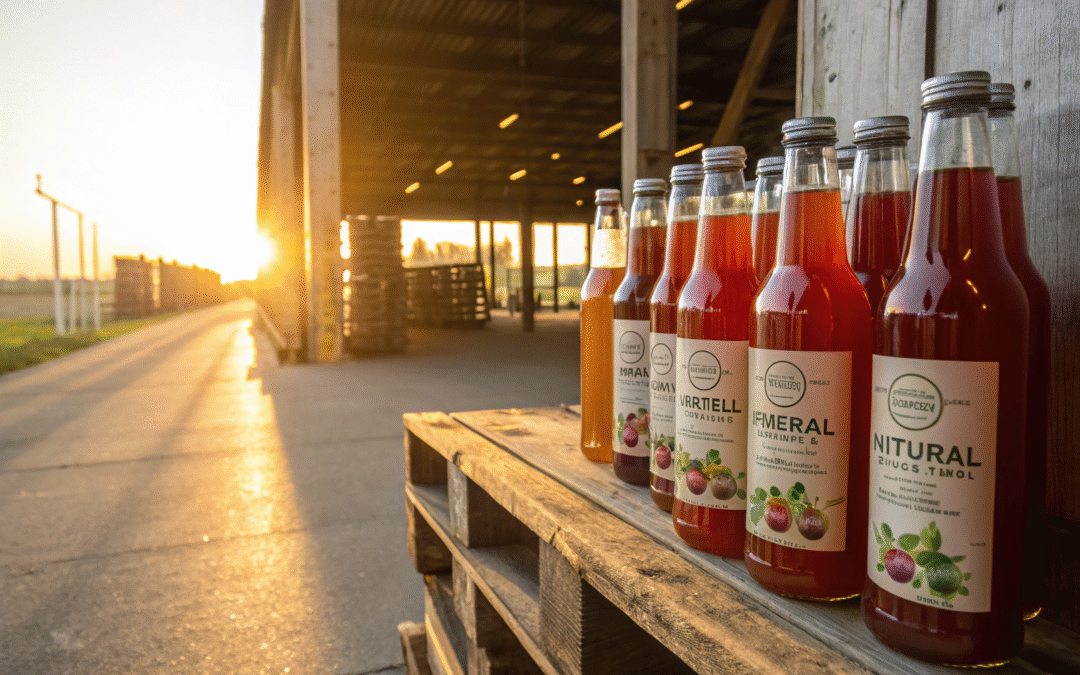



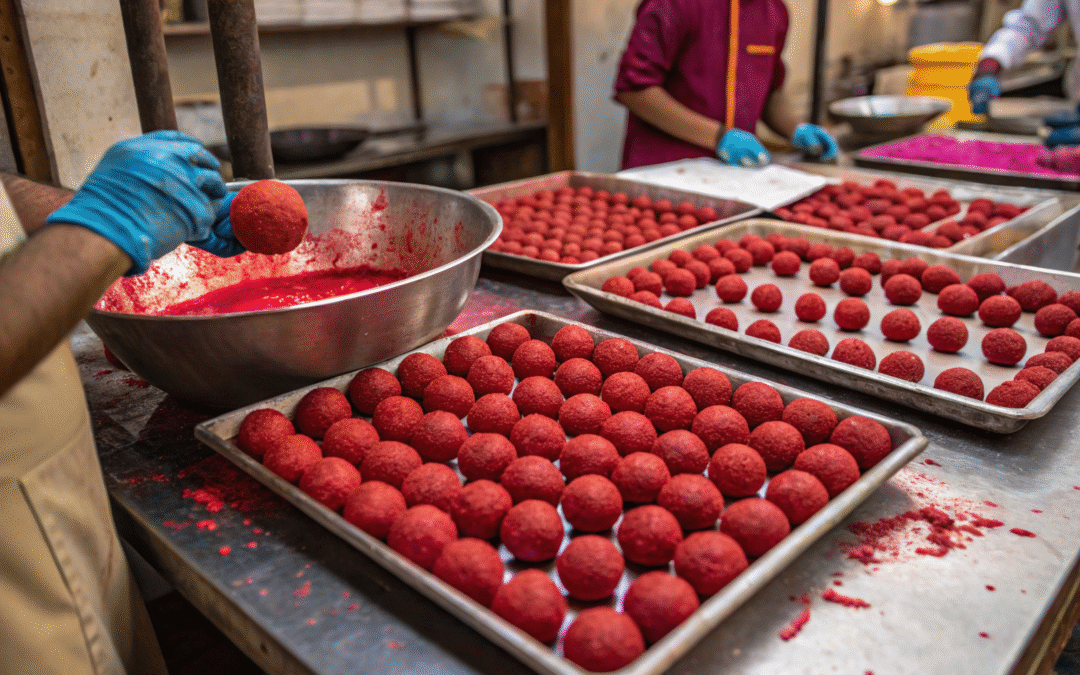
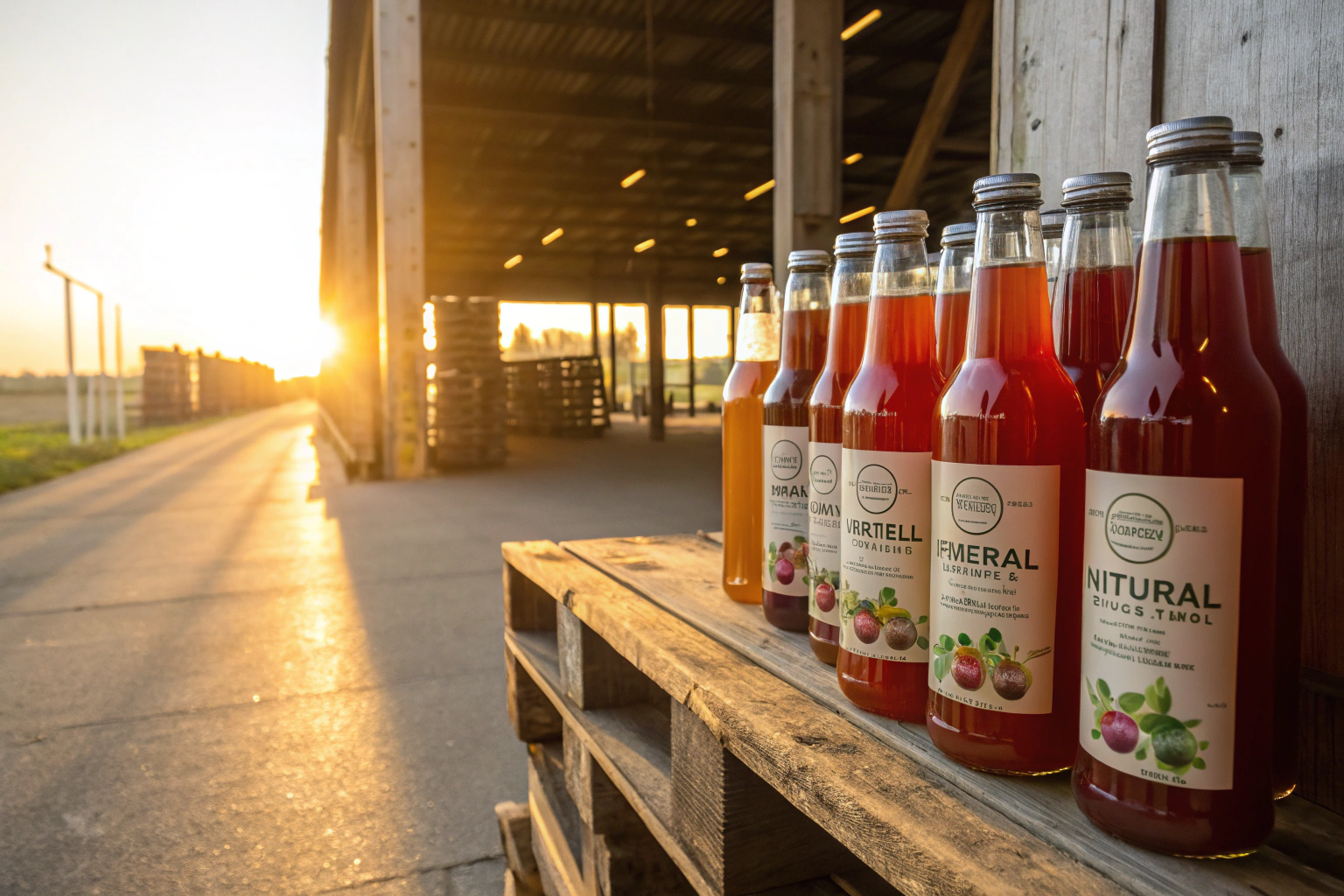
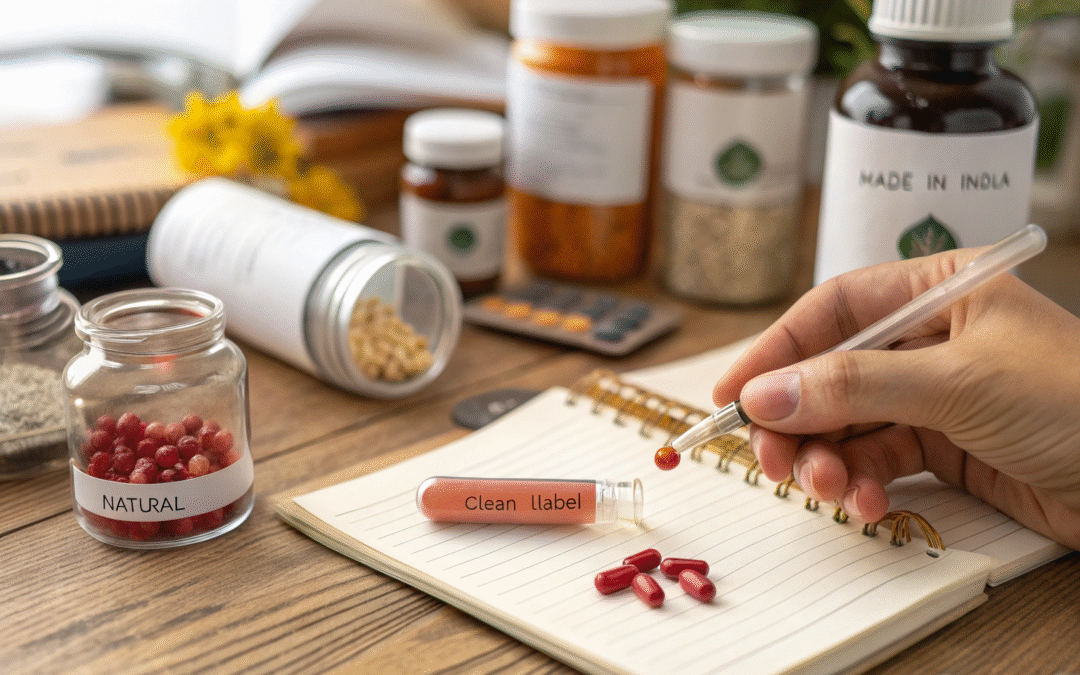
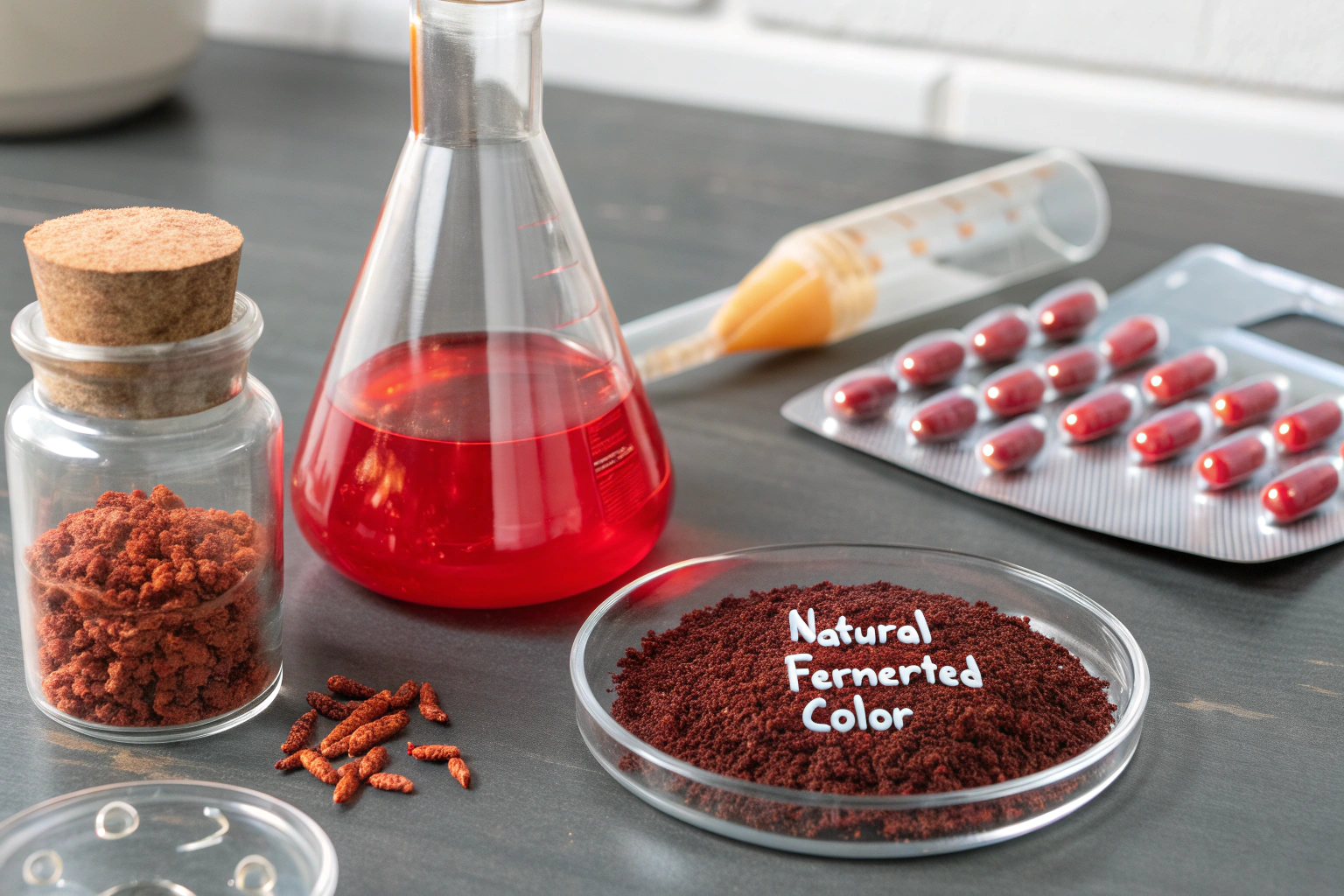
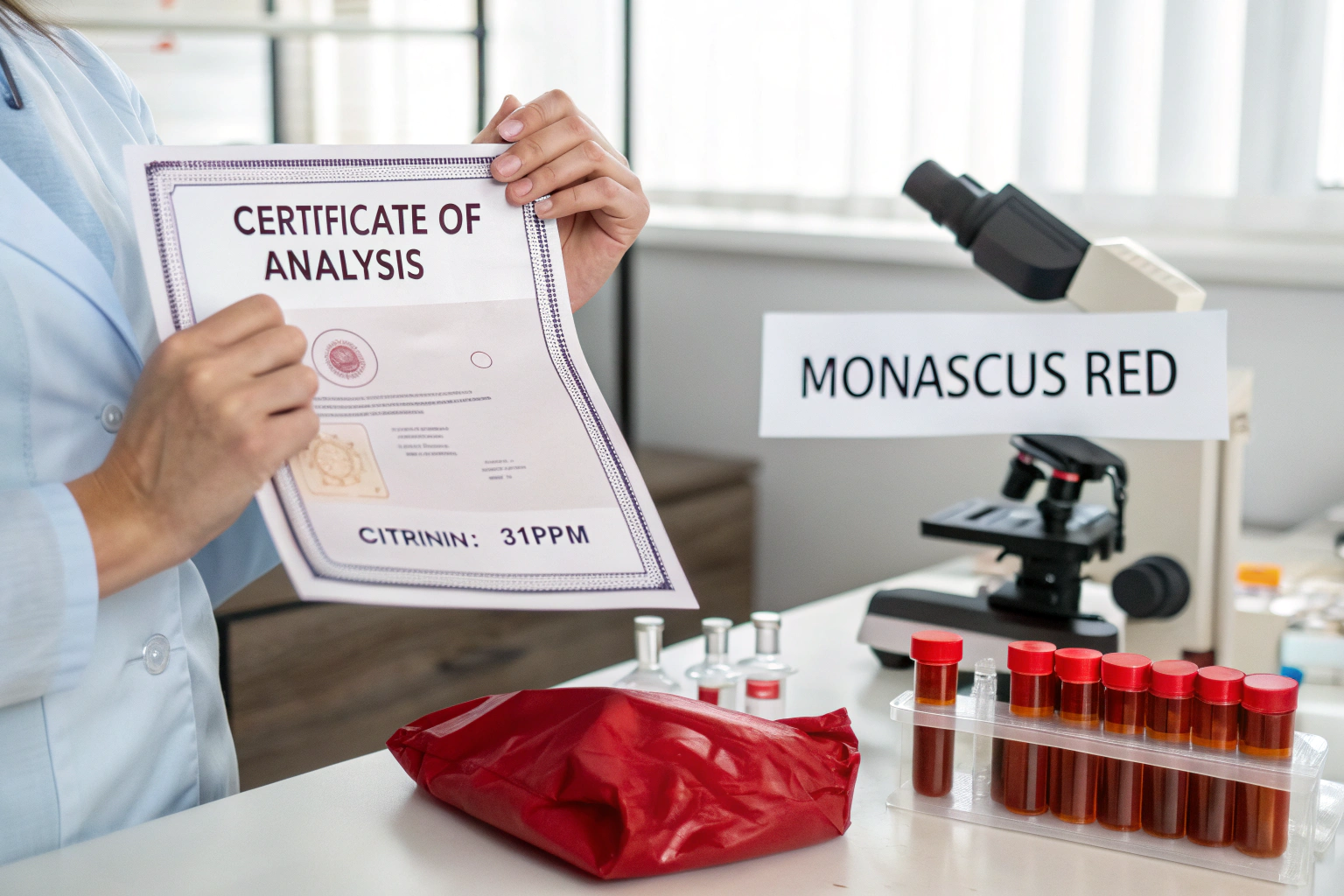
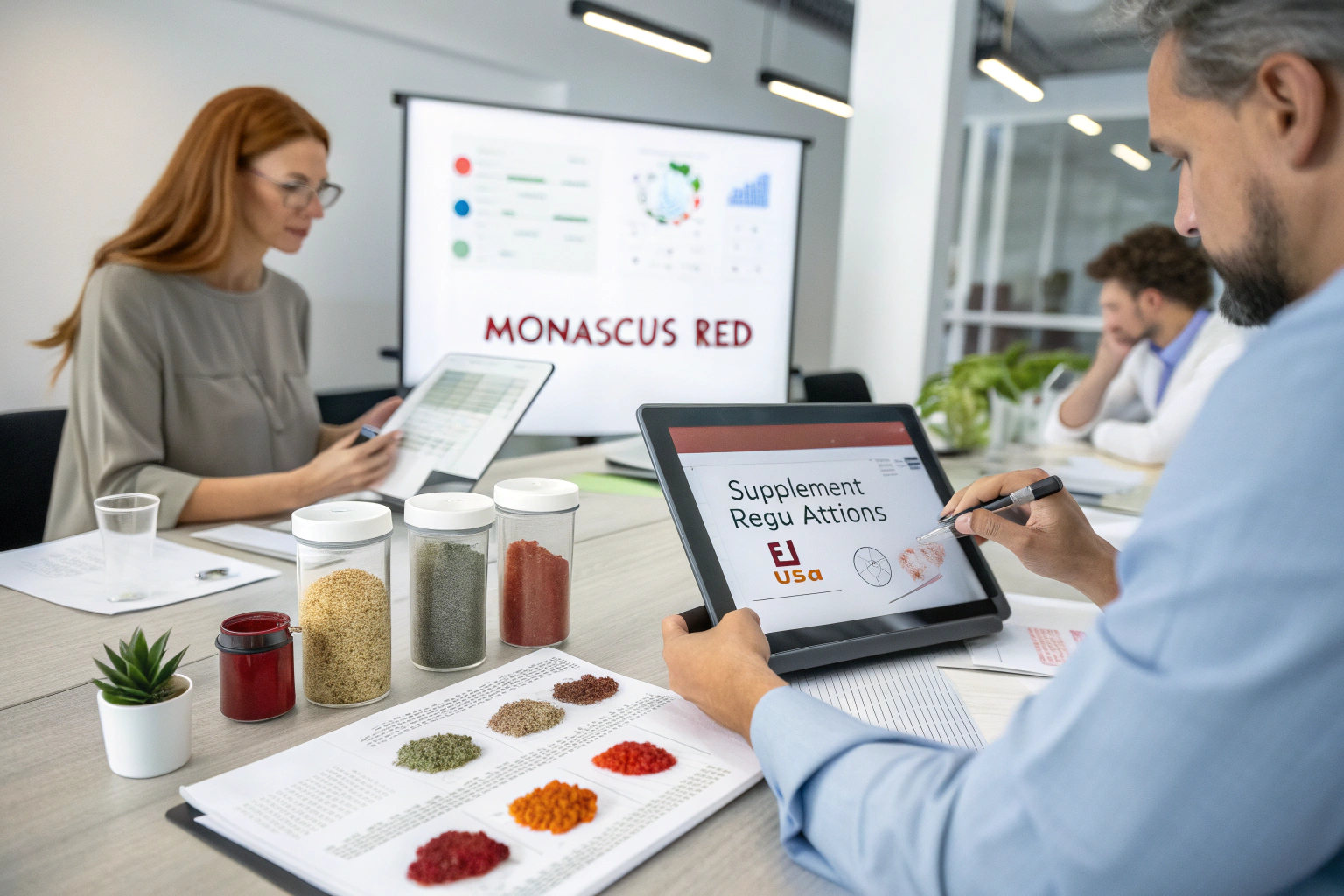
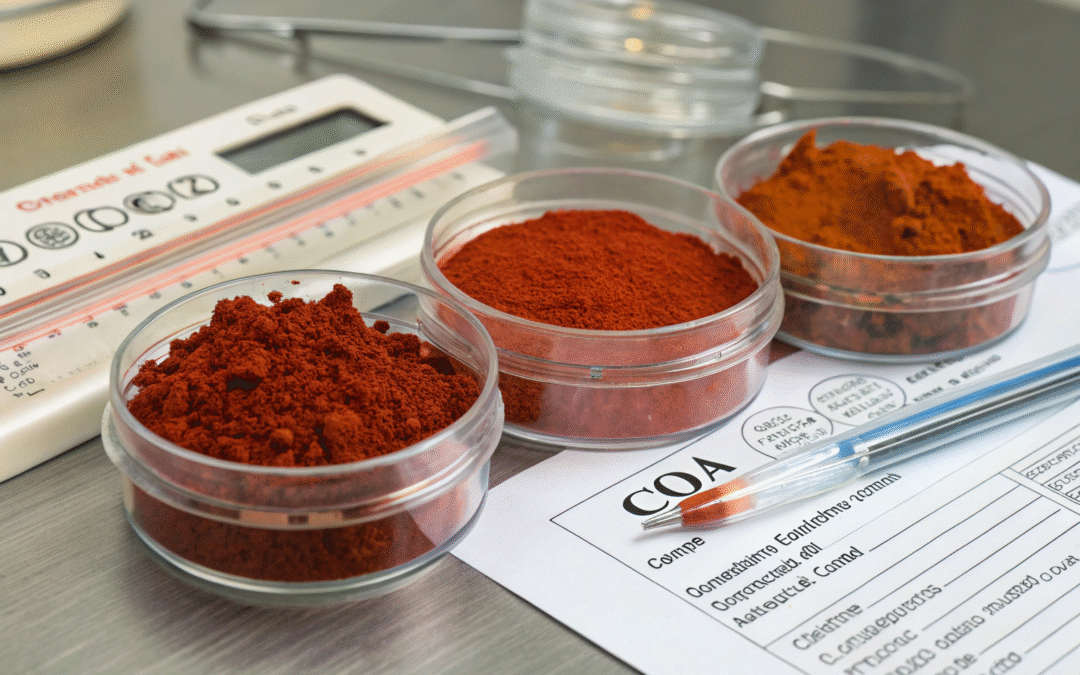
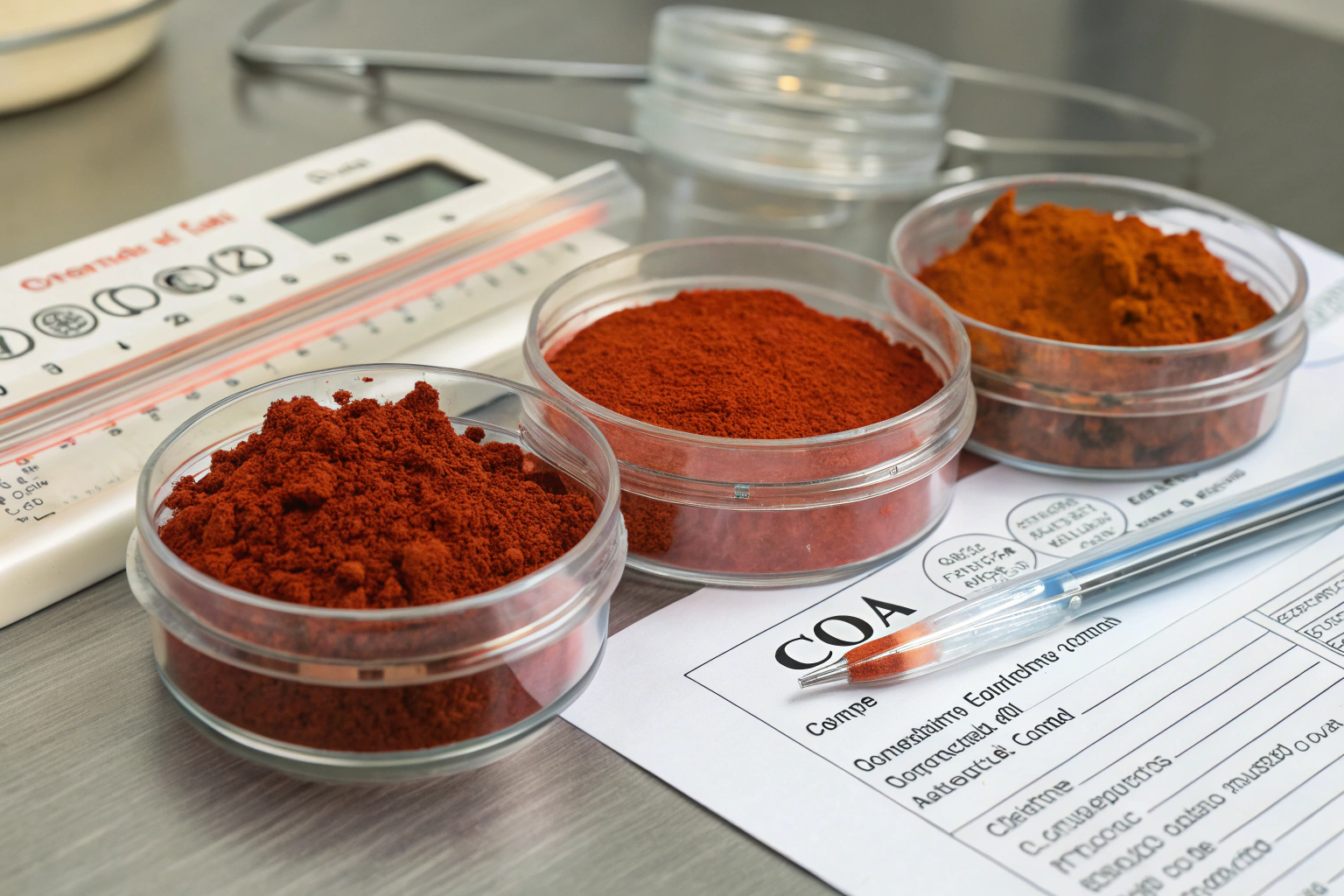
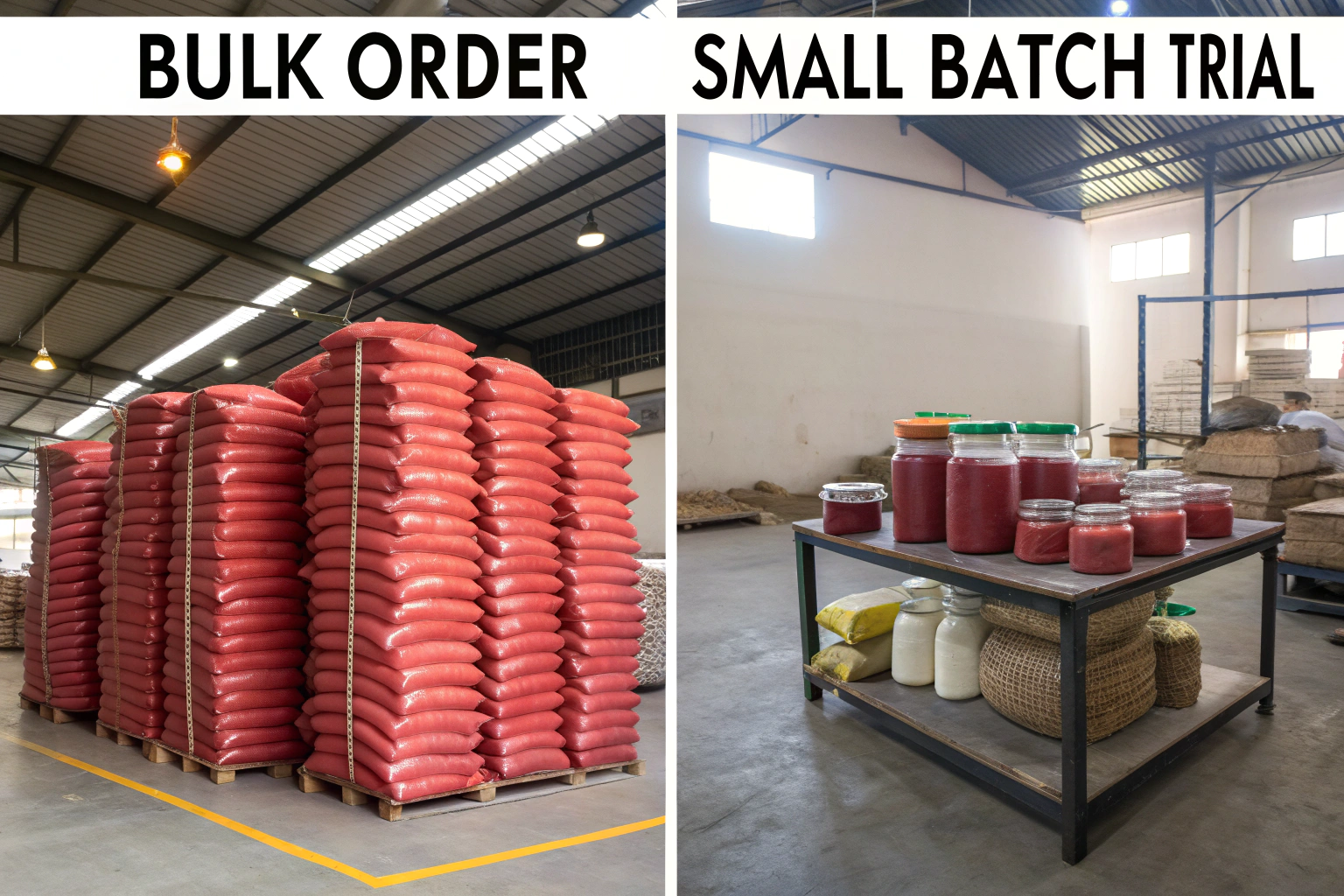
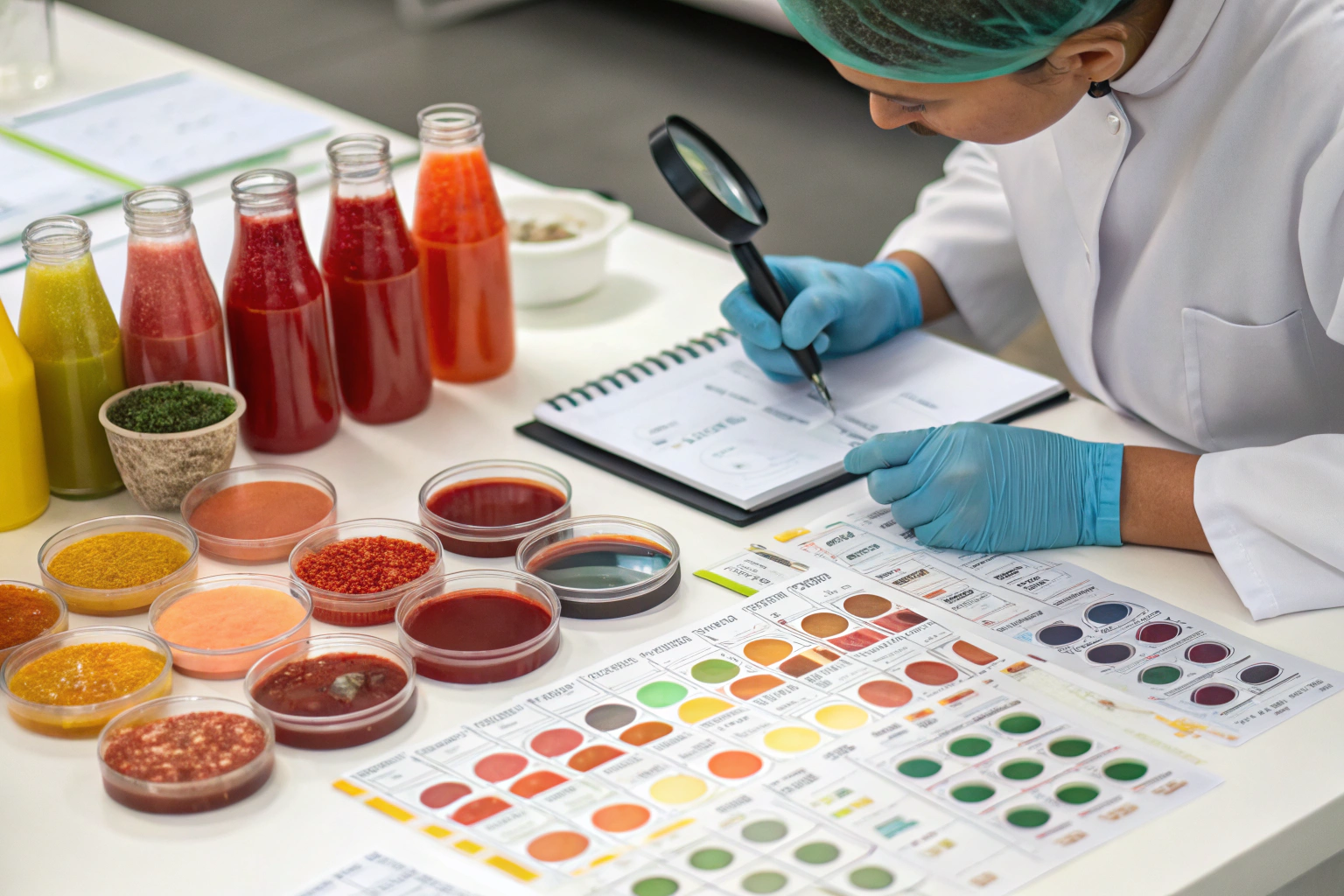
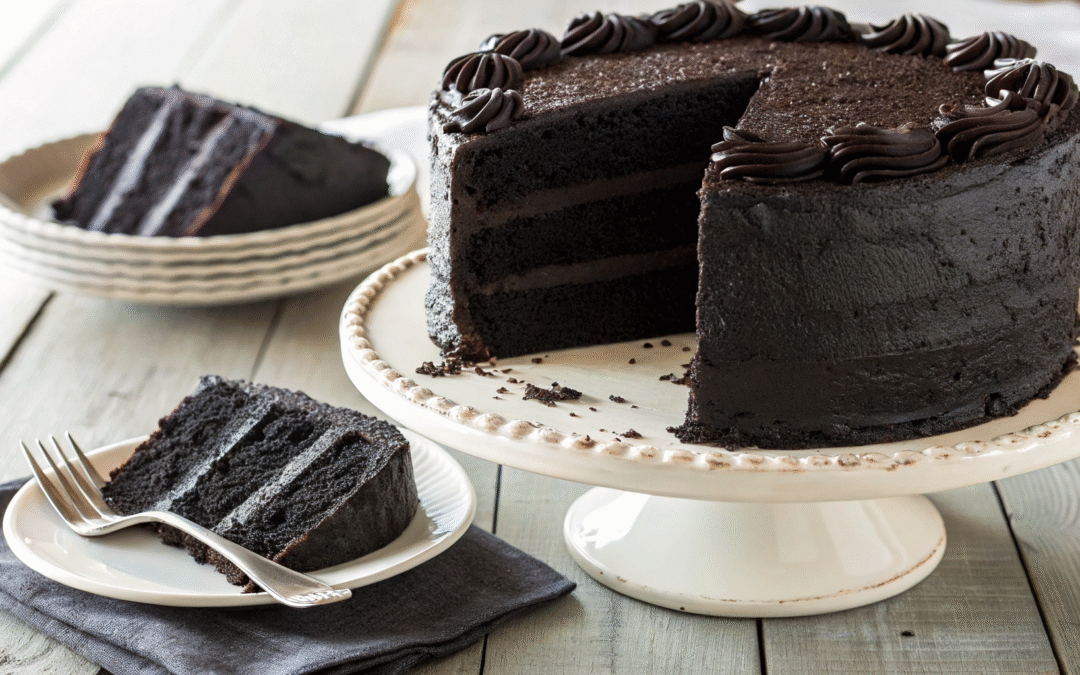
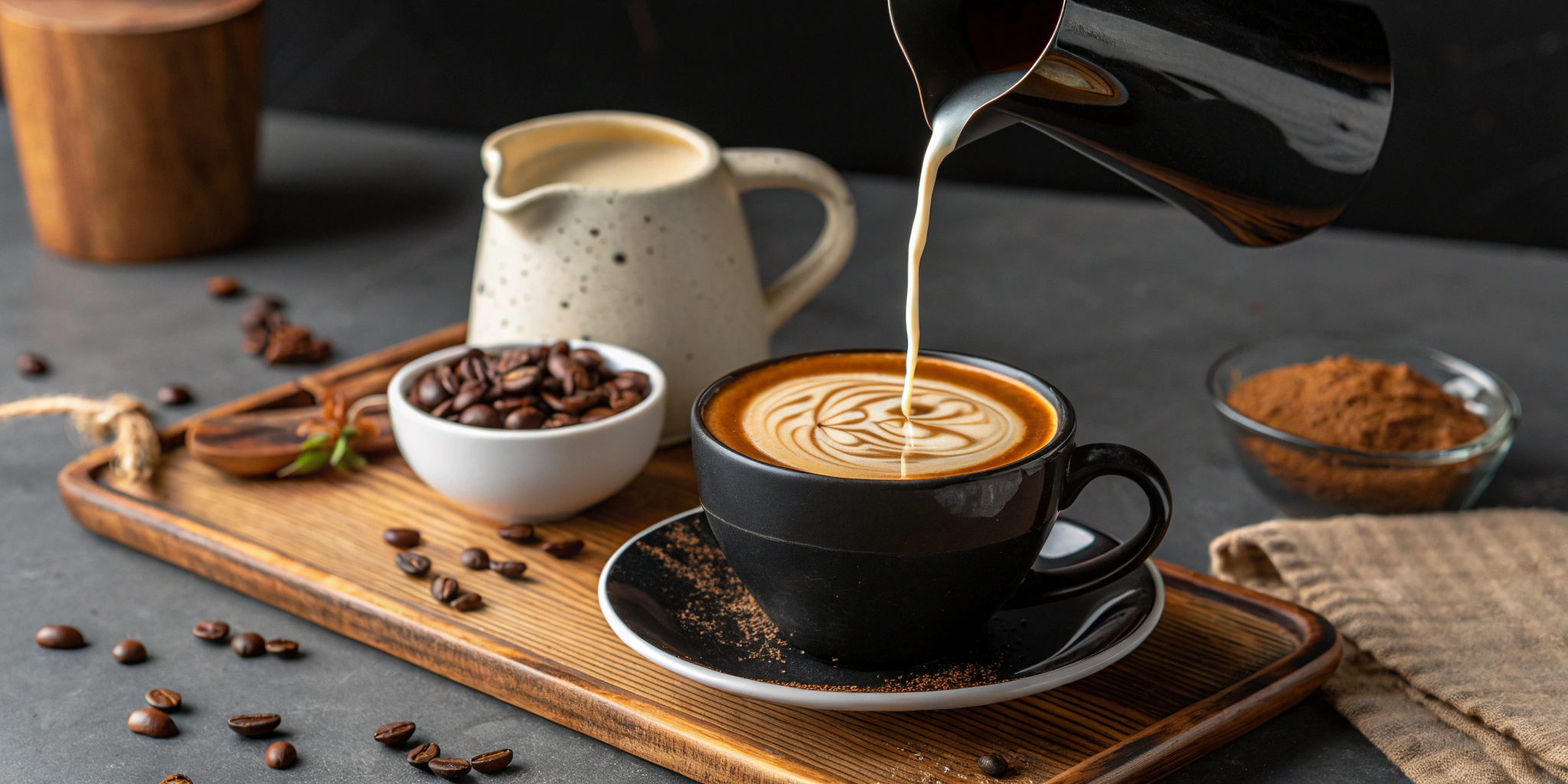
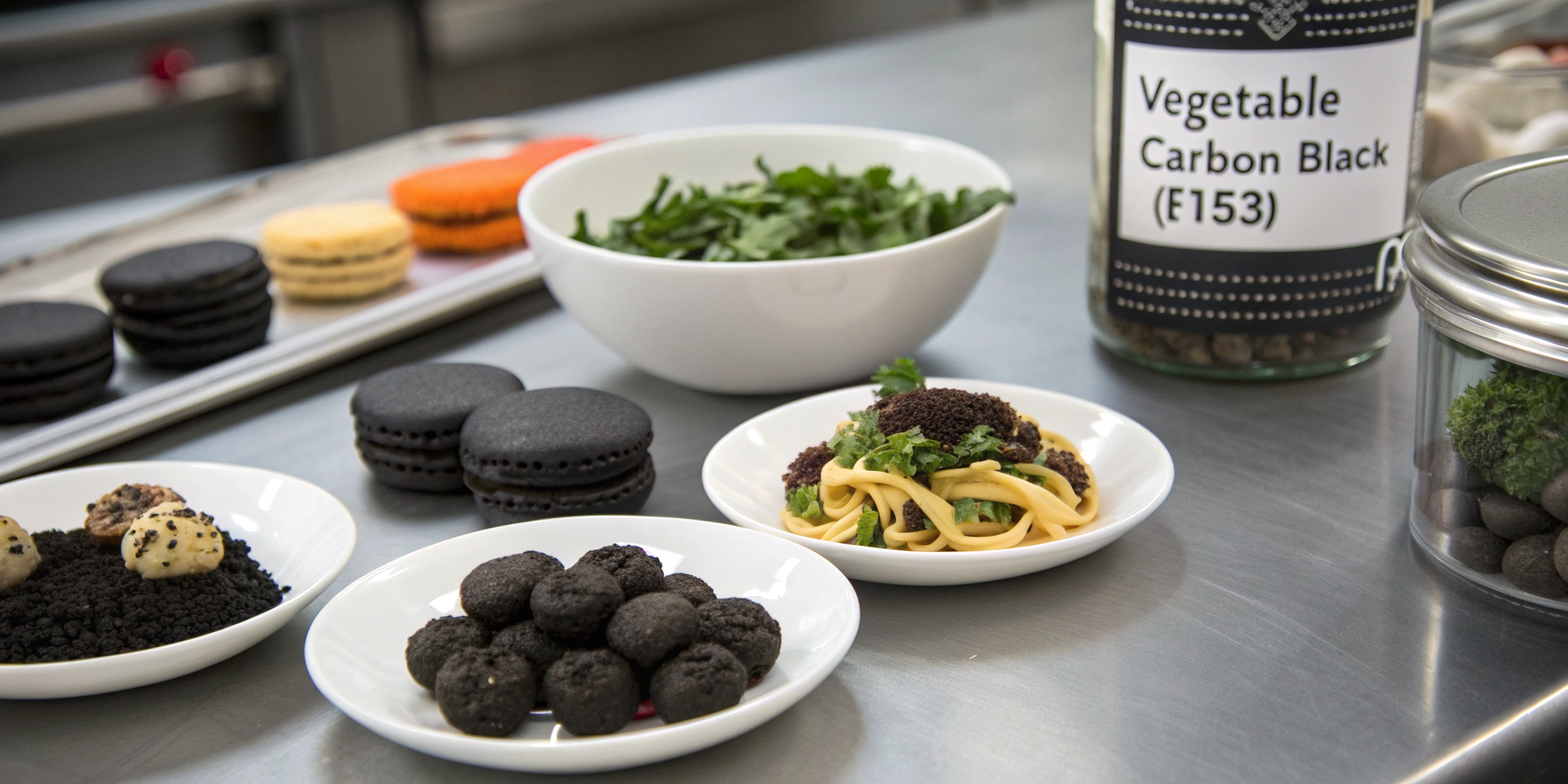
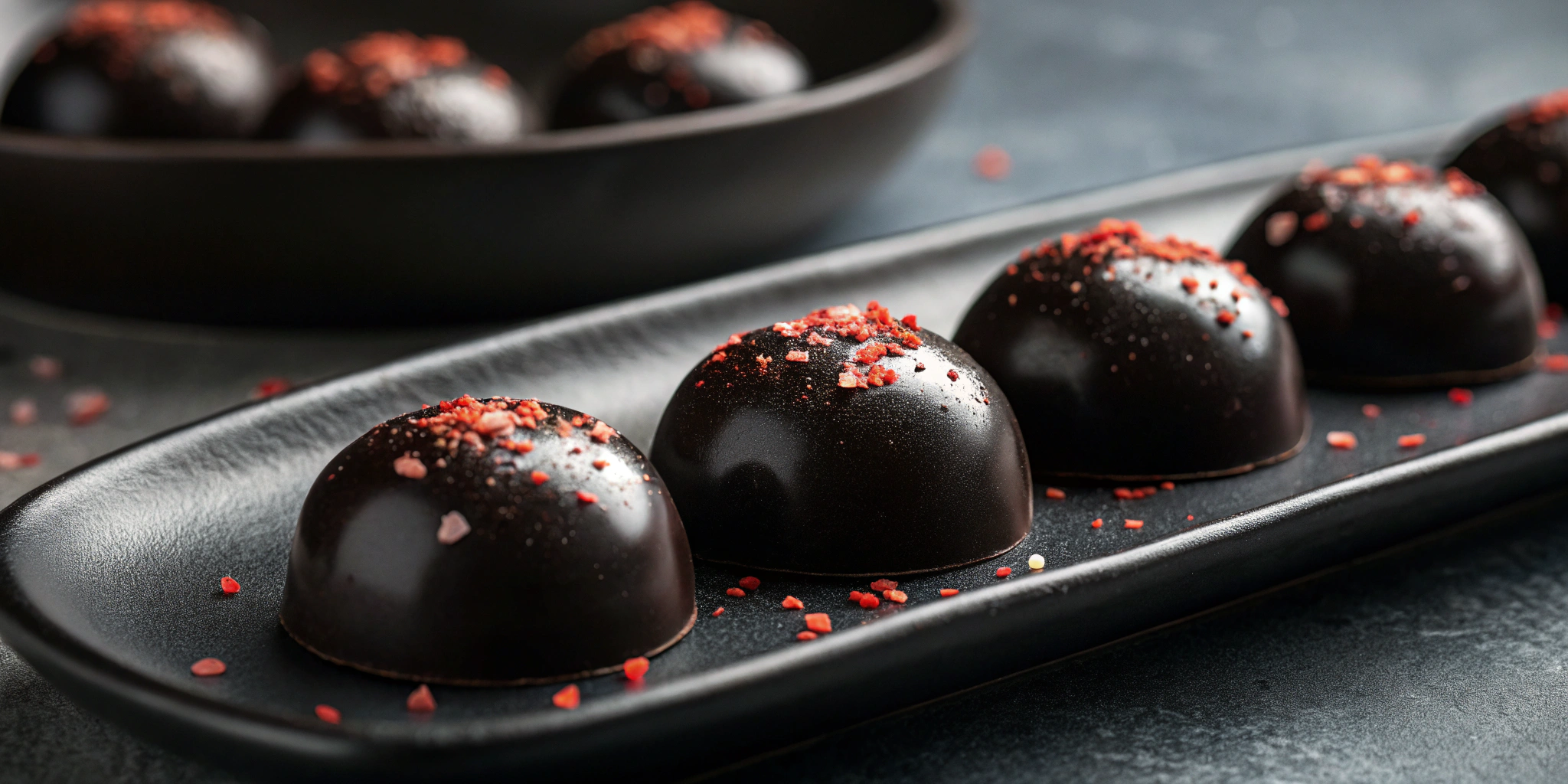
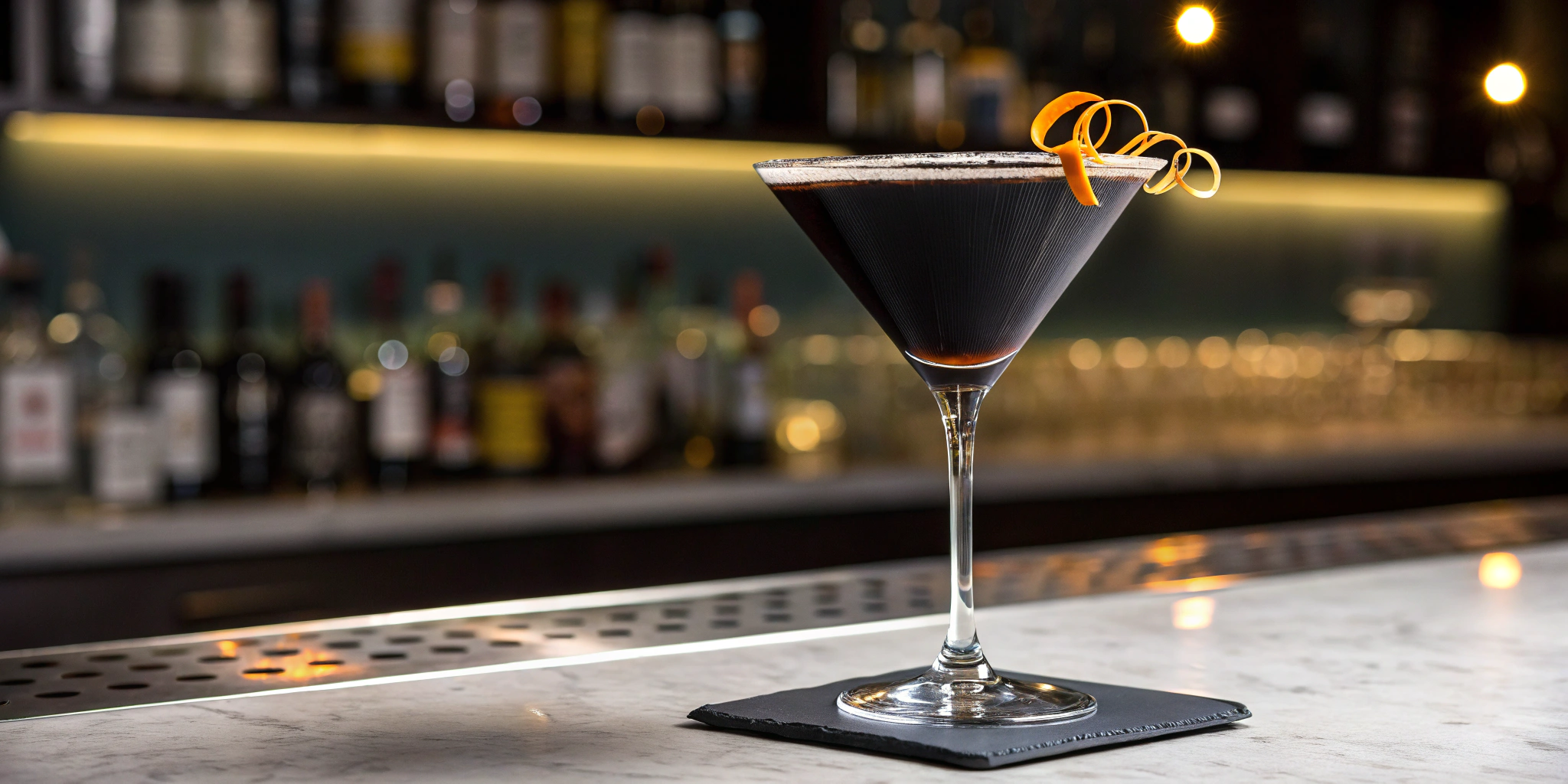
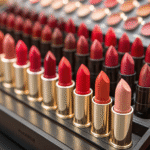
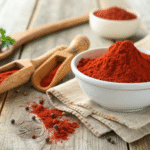
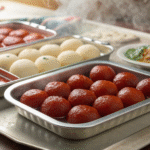
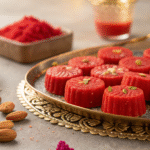
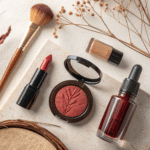
Recent Comments